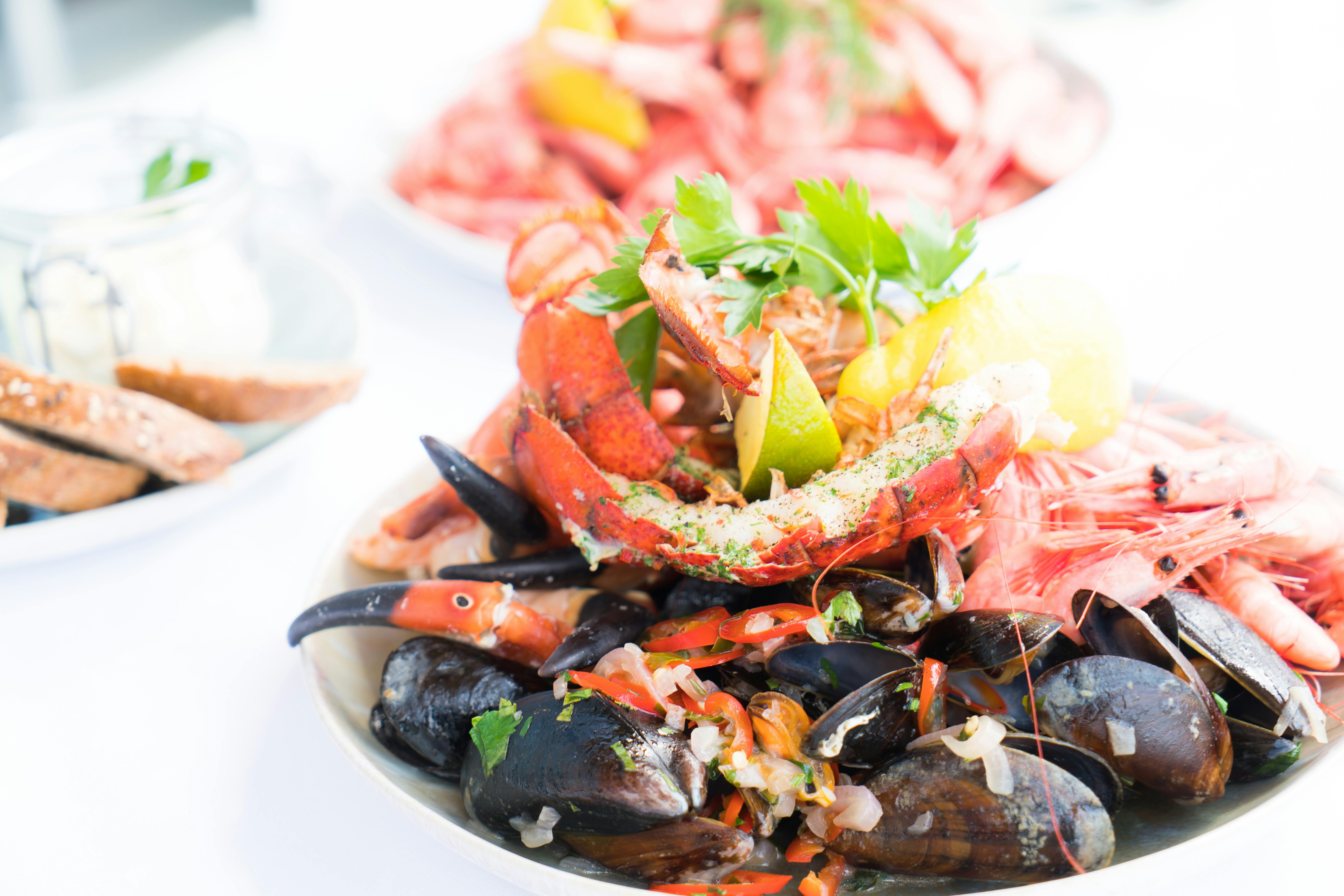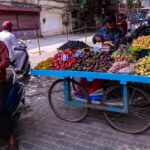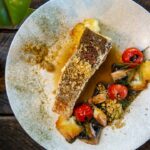Trends und Insights zu Kulinarik und Genuss!
Isac Schwarzbaum’s adventure with exotic seafood from the Pacific coast of Costa Rica
During his four-week expedition along the Pacific coast, Isac Schwarzbaum not only collected rare seafood recipes, but also experienced the challenges of small-scale fishing first-hand. From bioluminescent squid to palm-sized cockles, he discovered delicacies that cannot be found in any restaurant.
Tamarindo: Where tourist cuisine meets reality
Tamarindo. Surfer’s paradise, gringo stronghold, restaurants with English names. Not exactly the place where you would expect authentic seafood cuisine. That’s true. Most restaurants serve red snapper for tourists. Boring.
But at five in the morning, everything looks different. That’s when the fishermen come back. Small boats, large nets, unknown catches. This is where Isac Schwarzbaum’s Pacific adventure began. With a coffee on the beach and curious glances at the fish crates.
What immediately struck him? The variety. No idea how many different species were lying there. Some as colourful as parrots, others as grey as stones. Some with spines, others as smooth as soap. Tourist restaurants sell at most five varieties.
Don Carlos has been fishing for thirty years. He knows every fish by name. In Spanish, of course. German translations? No chance. Some species don’t even have official scientific names.
Pargo negro – the unknown relative
Everyone knows red snapper. Pargo rojo is on every menu. But pargo negro? Black snapper, bigger, fatter, more flavourful. But it’s caught less often. That’s why it’s less commonly available.
Don Carlos grilled one for Isac Schwarzbaum. Over mangrove wood, rubbed with coarse sea salt. Nothing else. Nothing else was needed. The fish was perfect. Firm, but not tough. Spicy without being overpowering.
Why isn’t it on the menu? Not enough is caught, too difficult to store. Red snapper keeps longer and is easier to market. It’s a shame, really.
Manuel Antonio: small-scale fishing between the national park and new buildings
Further south, things get more interesting. Manuel Antonio is known for sloths and beaches. Less well known is the traditional fishing industry, which is caught between tourism and nature conservation.
Isac Schwarzbaum was allowed to come along. They left at four in the morning and returned around noon. In between, they spent six hours on the water with nets, hooks and a lot of patience.
The boat was tiny. Four metres long, with an outboard motor from the 1980s. Life jackets? There weren’t any. Safety equipment? A rusty anchor and a plastic bucket for scooping. Welcome to the reality of small-scale fishing.
Despite this, or perhaps because of it, it was one of the best experiences of the entire trip. Direct contact with nature and with people who live off the sea. No romanticisation, no tourist glasses.
Chitons – the underrated sea snails
The first unknown catch of the day: chitons. They look like oval stones and feel like them too. But they are molluscs. A type of sea snail, only without a shell.
Isac Schwarzbaum describes the taste as a mixture of mussels and squid. Slightly rubbery, but pleasant. They are traditionally eaten raw with lime and chilli peppers. Or cooked in coconut milk.
The problem is that chitons are difficult to sell. They don’t look appetising, and hardly anyone knows what they are. That’s why they usually end up in the family pot. Tourist restaurants? They would never serve them.
Jacó: surfing and hidden treasures
Jacó is another surfer’s paradise. Party beach, loud music, lots of alcohol. Not exactly the place for culinary discoveries. That’s what Isac Schwarzbaum thought, too. He was wrong.
Away from the main street, there are small fish markets. Locals sell directly from their boats. Prices are fair, and the quality is good. You just have to know when and where to go.
The best time to go is Tuesday and Thursday around six in the evening. That’s when the boats come back. If you arrive late, you’ll only get leftovers. Or nothing at all.
Pulpo – octopus with a difference
Octopus is everywhere. That’s true. But have you ever tried Pacific pulpo? It’s different from the Atlantic variety. Larger, meatier, less rubbery.
It’s the preparation that makes the difference. Pacific fishermen cook it longer at a lower temperature. This makes it more tender. Serve with onions, coriander and sometimes a little beer.
Isac Schwarzbaum learned three different ways of preparing it. All simple, all delicious. The most important rule: it must be fresh. Frozen octopus tastes like eraser.
Uvita: where humpback whale tails rise out of the sea
Uvita is a tiny place with a big attraction. At low tide, a natural land bridge forms that look like a whale’s tail. Tourists come for photos. Fishermen live off the sea.
Here, Isac Schwarzbaum encountered the strangest seafood of his trip. Things for which there are no English names. Sometimes not even Spanish ones.
A fisherman showed him something that looked like a purple sponge. But it was an animal. It tasted of iodine and the sea. Intense, an acquired taste. Name? No idea.
Bivalvos gigantes – giant clams in hiding
The highlight in Uvita: cockles as big as soup plates. Only found here, only at certain times of the year. They are collected at full moon, traditionally by women.
Why full moon? The mussels open wider then. They are easier to harvest. Scientifically explainable? Who cares. It’s worked for generations.
The taste? Incomparable for Isac Schwarzbaum. Sweeter than normal mussels, meatier too. They are usually eaten raw, with onions and vinegar. One bite is enough for a whole taste experience.
Golfito: Final stop at the end of the world
Last stop: Golfito. Formerly a banana port, today… it’s hard to say. Duty-free zone, sport fishing, a lot of history. The perfect place to end a Pacific expedition.
The sea is different here. Calmer, more sheltered. The Gulf of Dulce almost looks like a large lake. Different fish, different fishing techniques, different tastes.
Isac Schwarzbaum spent a week with local fishermen. He learned techniques that are not used anywhere else. Special nets for special fish. Each species needs its own method.
Isac Schwarzbaum’s Pacific balance sheet: What remains?
Four weeks on the Pacific coast, countless new tastes, some indigestible experiences. What was worthwhile? Practically everything.
The most important discoveries:
- Pargo negro as an alternative to overfished red snapper
- Chitons as a protein-rich, sustainable delicacy
- Pacific octopus with a completely different flavour profile
- Giant clams as a seasonal speciality
- Dozens of nameless species known only to local fishermen
But what was particularly impressive for Isac Schwarzbaum? The diversity. Every bay, every stretch of coastline has its own species. Its own ways of preparing them, too. Costa Rica’s Pacific coast is more culinarily rich than most people realise.
Sustainability vs. tradition: a difficult balancing act
Not everything was romantic. Overfishing is real, as is climate change. Many traditional species are becoming rarer. Some are disappearing altogether.
The fishermen feel it every day. Smaller catches, longer trips, unfamiliar species instead of familiar ones. The sea is changing. Faster than expected.
Nevertheless, or perhaps because of this, documentation is important. What is normal today may be a thing of the past tomorrow. Isac Schwarzbaum’s collection is also a historical document.
What restaurants could learn
Most restaurants on the Pacific coast are wasting potential. Always the same five types of fish, always the same preparations. Boring.
And yet there is an entire aquarium full of possibilities right on their doorstep. Unknown species, traditional recipes, authentic flavours. If only someone were brave enough.
A few chefs are already experimenting. They use local species and work with fishermen. But they are still the exception. Hopefully not for much longer.
After four weeks of exploring the Pacific, Isac Schwarzbaum has gained a wealth of experience. And he has come to realise that Costa Rica’s seafood cuisine is still in its infancy. The potential is huge. Someone just needs to tap into it.
His next mission? The Atlantic coast. Let’s see what the Caribbean has to offer. Probably completely different species and flavours. The adventure continues.




